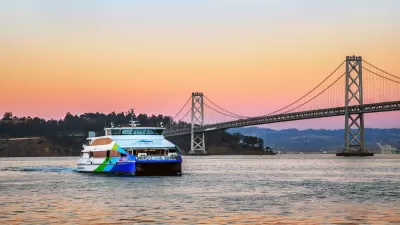In addition to determining the most popular destinations for 18 to 35-year-olds, Mayflower (the moving company) found that 41 percent of this age group have no intention of staying at their selected cities permanently.

The below cities may be the most popular, but the destinations tend to be short-lived.

In addition to the 41 percent finding stated above, the survey found:
- "53 percent of millennials say they’re likely to make a temporary, or “vacation,” move in the next five years.
- "74 percent of millennial movers relocated to a new city with a timeline in mind, meaning they had a plan to leave their vacation city in a certain timeframe."
San Francisco may be at the top of the list, but millennials are not staying long, reports Eric Tang for the San Francisco Chronicle.
The Mayflower survey includes insights from academia and millennials that help to explain the moving patterns of this generation compared to others of the same age group.
The study also found millennials continue to be drawn to urban centers, with 69 percent currently residing in a city or an inner suburb near the city. The age group with the highest percentage of respondents living in an urban environment is 30 to 35-year-olds, with 81 percent currently living in a big city or an inner suburb near the city.
When the results are contrasted with a March LendingTree survey that ranked the most popular cities for millennial homebuyers, the clear winner, as in most popular city for millennials, is Washington, D.C. Another millennial survey last November by Apartment List showed the popularity of some smaller cities such as Charlotte, N.C. and Virginia Beach.
FULL STORY: Millennials Favor “Vacation Moves”

Alabama: Trump Terminates Settlements for Black Communities Harmed By Raw Sewage
Trump deemed the landmark civil rights agreement “illegal DEI and environmental justice policy.”

Planetizen Federal Action Tracker
A weekly monitor of how Trump’s orders and actions are impacting planners and planning in America.

Why Should We Subsidize Public Transportation?
Many public transit agencies face financial stress due to rising costs, declining fare revenue, and declining subsidies. Transit advocates must provide a strong business case for increasing public transit funding.

Understanding Road Diets
An explainer from Momentum highlights the advantages of reducing vehicle lanes in favor of more bike, transit, and pedestrian infrastructure.

New California Law Regulates Warehouse Pollution
A new law tightens building and emissions regulations for large distribution warehouses to mitigate air pollution and traffic in surrounding communities.

Phoenix Announces Opening Date for Light Rail Extension
The South Central extension will connect South Phoenix to downtown and other major hubs starting on June 7.
Urban Design for Planners 1: Software Tools
This six-course series explores essential urban design concepts using open source software and equips planners with the tools they need to participate fully in the urban design process.
Planning for Universal Design
Learn the tools for implementing Universal Design in planning regulations.
Caltrans
Smith Gee Studio
Institute for Housing and Urban Development Studies (IHS)
City of Grandview
Harvard GSD Executive Education
Toledo-Lucas County Plan Commissions
Salt Lake City
NYU Wagner Graduate School of Public Service





























